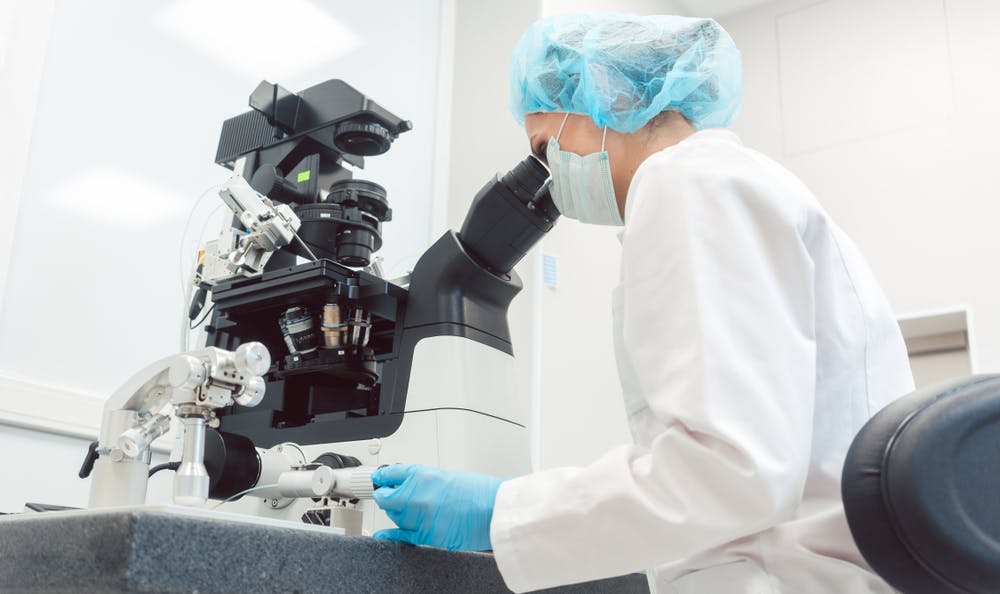The in vitro fertilization laboratory must employ key performance indicators, or KPIs, to maintain internal quality control. KPIs are tools that allow reproductive endocrinology specialists to measure parameters of the laboratory environment.
Treatment through assisted reproductive technology is a complex, multistage process, with a number of variables that affect the outcome. Some of these are specific to the patient, such as age and number of oocytes collected, while others are related to the laboratory process itself, such as fertilization rate and morphological quality of the embryos.
The Value of Tracking KPIs
In order to maintain quality in an IVF laboratory, clinicians should focus on the laboratory KPIs (L-KPIs) that clinics are able to control. However, the combination of clinical KPIs (C-KPIs) and laboratory KPIs together determines what the successful pregnancy rate will be. A study in JBRA Assisted Reproduction showed that the total KPIs score, or C-KPIs plus L-KPIs, "was correlated with the presence or absence of clinical pregnancy." The authors suggest using this total KPIs score to set benchmarks for clinical pregnancy.
According to a study published in Fertility and Sterility, the relationship between the C-KPIs score and the L-KPIs score can provide reproductive specialists with important information on how clinical techniques and laboratory protocols interact. Comparatively analyzing values like fertilization rate can help pinpoint problems in the IVF laboratory or in the work of embryologists or clinicians.
Which L-KPIs Are Important to Track?
The JBRA Assisted Reproduction study reports that a percentage of fertilization (defined as the number of oocytes that had formed two distinct pronuclei 16 to 19 hours after the procedure) at or above 65 percent is the best benchmark, and is closely linked to prediction of clinical pregnancy. Another important variable is the morphological quality of the embryonic lot. This is measured in different ways in different studies (for instance, early cleavage or the presence of blastomeres), but a higher embryo quality is almost universally associated with a higher likelihood of pregnancy.
The Vienna consensus report, the result of a two-day consensus meeting of expert professionals in assisted reproductive technology (ART), recommended twelve KPIs for ART laboratories. Each one is related to the "core business" of the IVF laboratory rather than the quality of the oocytes it receives:
- Intracytoplasmic sperm injection (ICSI) damage rate
- ICSI normal fertilization rate
- IVF normal fertilization rate
- Failed fertilization rate
- Cleavage rate
- Day 2 embryo development rate
- Day 3 embryo development rate
- Blastocyst development rate
- Successful biopsy rate
- Blastocyst cryosurvival rate
- Implantation rate (cleavage-stage), visible on ultrasound
- Implantation rate (blastocyst-stage), visible on ultrasound
The consensus board encourages individual clinics to pursue a selection of benchmarks based on their own experiences. Clinics may also choose to examine a different selection of KPIs for different subdivisions of their patient population, such as women over versus under age 40 or patients transferring fresh versus frozen embryos.
Setting Benchmark Values for KPIs
KPIs only make sense when related to historical averages, which is why it is crucial for clinics to determine the benchmark values and reference ranges for their KPIs. Select a reasonable number of KPIs to track weekly, monthly or annually; more is not necessarily better.
Even if some aspects of the laboratory system may never be completely optimal, using KPIs to set benchmarks and monitor quality can provide the ART clinic with responsive information about any changes that may require the retuning of protocols.


